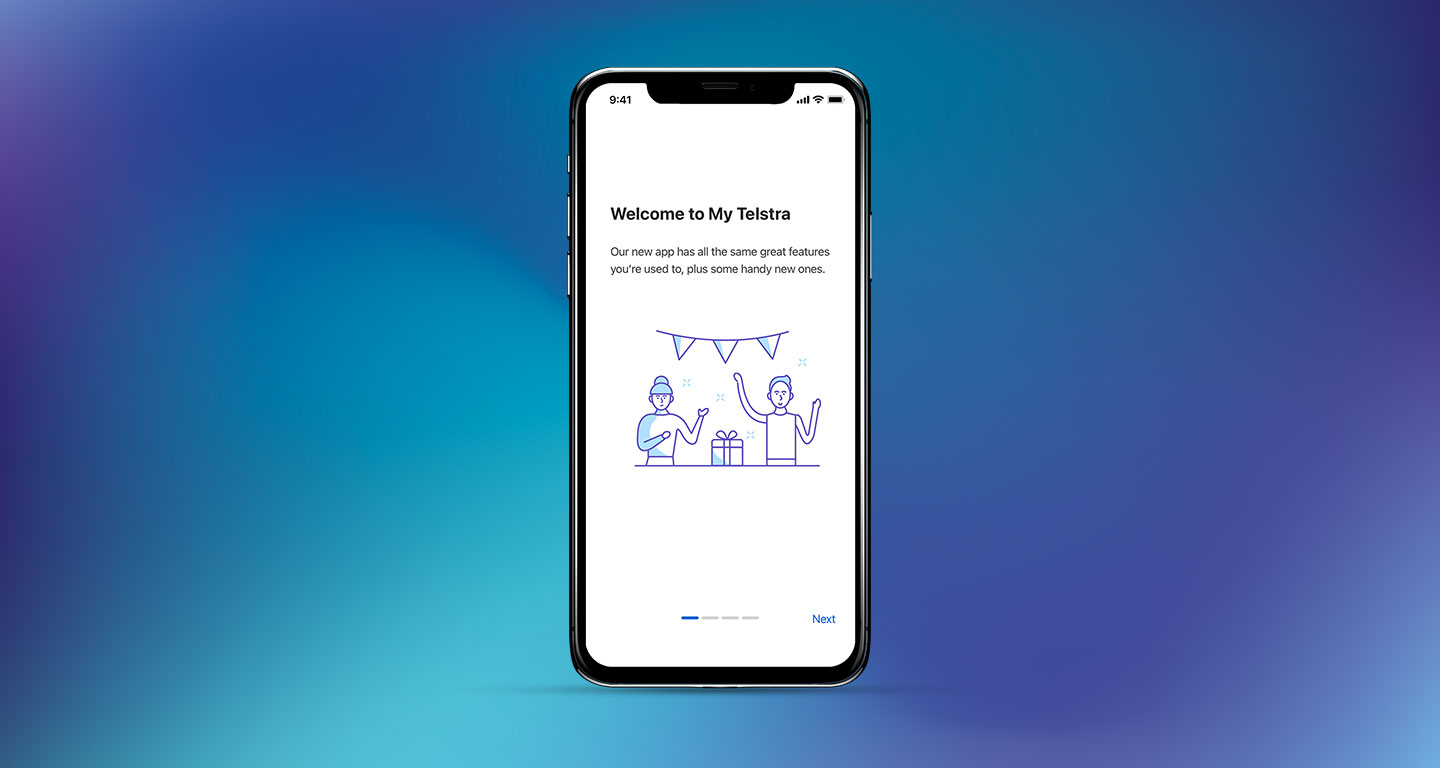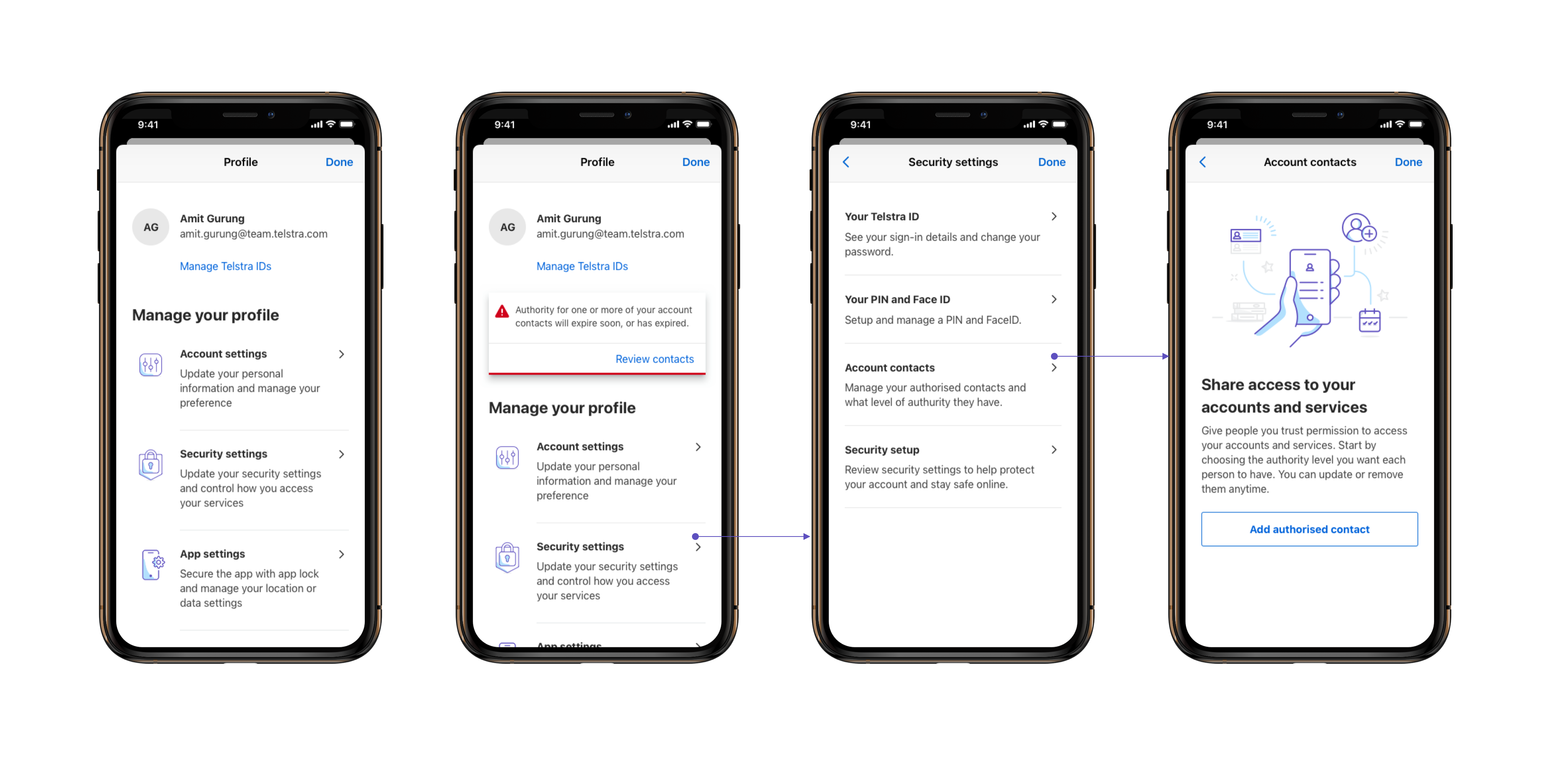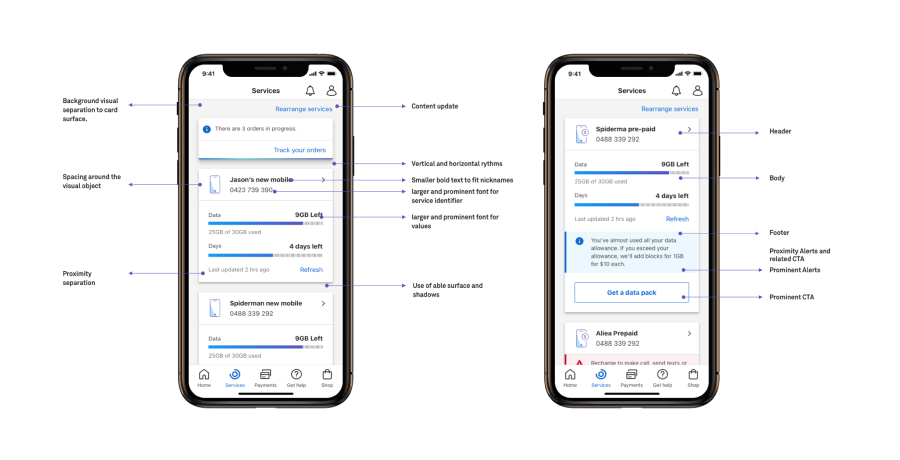



The year 2018/19 was marked by a series of key initiatives and developments that underscored Telstra's commitment to delivering cutting-edge services, expanding its network infrastructure, and enhancing customer experiences. In an era of rapid technological transformation, Telstra was at the forefront of the digital evolution, addressing both the opportunities and challenges that emerged.
The primary objective of the T22 strategy was to create a modern, user-friendly, and accessible platforms that simplifies the customer experience, reduces friction in managing Telstra services, and provides a foundation for future innovations.
The Telstra 24/7 mobile app and My Account web services, while offering convenience and access to various Telstra services, have been associated with several customer problems over time. From complex navigation to confusing IA, limited services to inconsistent experience, lagging real-time usage information, personalisation, security, and accessibility were the most significant challenges.
Telstra had planned to retire both services to build new digital services to keep the digital experience seamless. In a simple quote, Telstra was ready for digital transformation to simplify it's products and services.
The Telstra 24/7 mobile app and My Account web services, while offering convenience and access to various Telstra services, have been associated with several customer problems over time. From complex navigation to confusing IA, limited self-service capabilities, non-intuitive user interface, inconsistent experience, lagging real-time usage information, accessibility, security and lack of personalisation were the most significant challenges.
The strategy was to transform the digital customer experience from scratch to deliver futuristic capabilities, which included discovery, ideating, design, and review. The engagement had the design strategy, end-to-end experience design, and build up a new company-wide design language system (DLS) to support Telstra's massive rebranding effort and inform the design of new products and services.
The flagship product of the matured DLS is the My Telstra app—a new, personalized digital platform that empowers Telstra customers to take control of their telecom services. Informed by in-depth customer research, together raised the standard for self-service telecom experiences, driving new engagement across Australia for 22 million customers.
The project involved discovery and ideation workshops, CX journey mappings, conducting in-depth user research, UX design, accessibility guide, interactions guide, design systems, and visual design delivery for web, iOS, and Android platforms.
Telstra conducted extensive user research activities used to gain insights into customer behaviors, needs, preferences, pain points and expectations. These activities (Usability testing, card sorting, A/B testing, collaboration with accessibility experts, and competitive analysis) were essential in informing the design and development of products, services, and experiences.
Throughout the engagement, the team sought to translate improved customer experiences into increased customer satisfaction and loyalty—all while reducing the company's customer support effort. More than a self-service app for essential telecom services like managing services, addons, billings, and purchasing products, the My Telstra app offers an elevated lifestyle element throughout. Baked into the user experience is personalized, aspirational content and offers that go far beyond the simple Telstra purple loyalty program to provide customers with meaningful, strategic guidance for incorporating their telecom services into their real lives.
In the My Telstra app, the dashboard is the nucleus of the user experience, presenting a unified view of users' postpaid, prepaid, and fixed services. We meticulously crafted this feature to enable customers to monitor and manage all their Telstra services from a single pane. Real-time data feeds ensure that customers have up-to-the-minute information on usage, billing, and service status, enhancing their ability to control their telecommunications experience efficiently.

The device repayment feature is designed to give users clear visibility and control over their device repayment plans. We implemented intuitive visuals and straightforward language to demystify the repayment process, providing users with a transparent overview of their remaining balance, due dates, and history. This empowers customers to plan their finances better and make informed decisions about their device investments.
Security is paramount in the My Telstra app. The Device Protect feature offers users robust tools to safeguard their devices against theft, loss, and damage. We integrated this feature with real-time diagnostics and support, enabling users to quickly lock their device, locate it, or wipe data if necessary. The interface is deliberately simple to navigate, ensuring users can act swiftly in the event of an emergency.
Recognizing the importance of privacy, we tailored the privacy settings to provide users with extensive control over their personal data. This feature is built with a clear, user-friendly interface that allows users to manage permissions, data sharing preferences, and access history, thus ensuring a trustworthy and secure user experience.
The service suspension feature is a critical function that allows users to temporarily disable their service with ease. This is particularly useful in situations such as suspected fraud or loss of device. We designed this feature to be accessible within a few taps, making it quick and stress-free for users to protect their accounts.
Profile management is streamlined in the My Telstra app, enabling users to update their personal information, contact details, and preferences with just a few clicks. The design is intuitive, leading to a frictionless experience that encourages users to keep their profiles up to date, which is essential for maintaining service accuracy and relevancy.
For users managing multiple accounts or for families, the authority management feature is indispensable. We designed this feature to allow users to set and manage different levels of access for each service, providing flexibility and control. This ensures that account holders can delegate management tasks while maintaining security and oversight.
To ensure that users can leverage all the features of the My Telstra app effectively, we implemented a guided onboarding process. This feature introduces users to the app through step-by-step tutorials, highlighting key functionalities and providing tips on how to manage their services effectively. This educational approach is designed to empower users and enhance their confidence in using the app.
Accessibility is a cornerstone of the My Telstra app design. We have adhered to global accessibility standards to ensure that the app is usable by everyone, including those with disabilities. Features such as screen reader compatibility, adjustable text sizes, and high-contrast modes are just a few examples of our commitment to inclusivity.
The mobile-first approach guided the design of the My Telstra app, ensuring that the most critical functions are easily accessible on a smaller screen. We prioritized touch interactions, streamlined navigation, and optimized performance for mobile devices, which enables a seamless experience for users on the go.
The My Telstra app leverages global native design patterns for iOS, Android, and Web to provide a consistent and familiar user experience across all platforms. By using platform-specific design languages, we ensure that users have a natural interaction with the app, irrespective of the device they are using.
The Double Diamond process played a crucial role in the design of the My Telstra app and web application. This structured design approach allowed us to thoroughly understand user needs, define the problem, develop a wide range of potential solutions, and refine these into a final set of features. Each stage of the process was iterative, involving user feedback to shape a solution that was both innovative and intuitive.
My Telstra was launched on multiple platforms, and customers were informed about the transition from the 24/7 app to the new platform. This transition was supported by a comprehensive marketing campaign.
Post-implementation, our focus shifted to UX metrics to quantify the redesign's effectiveness. Usability dramatically improved, as evidenced by a higher System Usability Scale (SUS) score. Engagement metrics, such as Daily Active Users (DAU), showed an uptick, indicating that users found the redesigned app more compelling to use daily. Task success rates surged, particularly for critical actions such as bill payments or service upgrades, showcasing the app's enhanced efficiency.
The redesign's success was also mirrored in conversion rates, which climbed, reflecting a smoother user journey that facilitated service upgrades and new account sign-ups. Importantly, customer satisfaction metrics like Net Promoter Score (NPS) and Customer Satisfaction (CSAT) surveys reflected a positive shift, aligning with the increased usability and task success rates.
When comparing pre- and post-redesign metrics, the results were telling. Not only did usability and engagement improve, but there was also a significant impact on the business, including a decrease in support calls and an increase in sales through the digital channels. Customer retention also improved, as the new app design helped to foster a more loyal user base.
The launch of "My Telstra" app and web project stands as a testament to the value of user-centered design and accessibility considerations. The project underscores how a strategic UX approach can lead to meaningful improvements in customer satisfaction and business performance. The project concluded with a set of recommendations for future enhancements and a commitment to ongoing evaluation to keep the app at the forefront of user experience excellence.